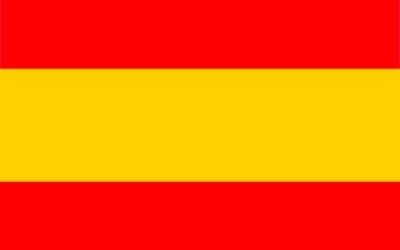RESUM
|
Les selenoproteïnes són proteïnes constituides per l'anomenat "aminoàcid 21", conegut també com selenocisteïna, el qual consisteix en una cisteïna on el grup tiol s'ha substituit per seleni. La peculiaritat d'aquest aminoàcid és que aquest està codificat pel codó TGA, el qual també realitza la funció de codó STOP. Així doncs, l'anotació de gens de selenoproteïnes comporta un repte a causa del caràcter bivalent d'aquest codó. L'objectiu d'aquesta recerca és la predicció i l'anotació de gens de selenoproteïnes en el genoma de Chelonia mydas, coneguda també com la tortuga verda. Per a assolir aquest objectiu, s'ha procedit a utilitzar programes informàtics d'alineament de seqüències com ara BLAST, exonerate i tcoffee. Mitjançant aquests programes s'ha pogut avaluar la presència de selenoproteïnes, la seva posició absoluta i el nombre d'exons. Així doncs, el genoma de Chelonia mydas conté les selenoproteïnes DI1 - 3, Gpx1 - 4, TR1 - 3, Sel15, SelH, SelI, SelK, SelM, SelN, SelO, SelP, SelPb, SelR, SelS, SelT, SelW i SPS2. A més, també conté els homòlegs en cisteïna Gpx7, Gpx8, MsrA, MsrA3, SelO1, SelO3, SelR2, SelR3 i SelU1. Per últim, les proteïnes de la maquinària predites en el genoma problema són SBP2, SPS1, SPS2, SecS, SECp43, pstk i eEFSec. En conclusió, en aquest treball s'han trobat 24 selenoproteïnes en Chelonia mydas, 23 de les quals es troben en el selenoproteoma ancestral. Els resultats obtinguts concorden amb l'evolució del selenoproteoma de vertebrats. |
ABSTRACT
|
Selenoproteins are constituted by the “aminoacid 21”, known as selenocystein, which consists of a cystein in which the tiol group has been substituted by selenium. The characteristic of this aminoacid is that it is encoded by the TGA codon, which also acts as a STOP codon. Therefore, the annotation of selenoprotein genes is challenging due to the bivalent nature of this codon. The aim of this research is to predict and annotate de selenoprotein genes in Chelonia mydas' genome, also called green turtle. In order to achieve this objective, sequence aligment computer programs such as BLAST, exonerate and tcoffee have been used. Through these programs, it has been evaluated the presence of selenoproteins, their absolute position and the amount of exons. Hence, Chelonia mydas' genome contains the following selenoproteins: DI1 - 3, Gpx1 - 4, TR1 - 3, Sel15, SelH, SelI, SelK, SelM, SelN, SelO, SelP, SelPb, SelR, SelS, SelT, SelW and SPS2. Moreover, it has also the cystein homologous proteins Gpx7, Gpx8, MsrA, MsrA3, SelO1, SelO3, SelR2, SelR3 and SelU1. Finally, the machinery proteins predicted in the problem genome are SBP2, SPS1, SPS2, SecS, SECp43, pstk and eEFSec. To conclude, in this study, 24 selenoproteins were found in Chelonia mydas, of which 23 are in ancestral selenoproteome. The obteined results are consistent with the evolution of vertebrates selenoproteome. |
RESUMEN
|
Las selenoproteínas son proteínas constituidas por el llamado “aminoácido 21” - conocido también como selenocisteína – , el cual consiste en una cisteína donde el grupo tiol se ha sustituido por un selenio. La peculiaridad de este aminoácido es que está codificado por el codón TGA, el cual también realiza la función de codón stop. Por tanto, la anotación de genes de selenoproteínas comporta un reto a causa del carácter bivalente de este codón. El objetivo de este estudio es la predicción y la anotación de genes de selenoproteínas en el genoma de Chelonia mydas, conocida también como tortuga verde. Para lograr este objetivo se han utilizado programas informáticos de alineamiento de secuencias como BLAST, exonerate i tcoffee. Mediante estos programas se ha podido evaluar la presencia de selenoproteínas, su posición absoluta y el número de exones. De esta manera, el genoma de Chelonia mydas contiene las selenoproteínas DI1-3, Gpx1-4. TR1-3, Sel15, SelH, SelI, SelK, SelM, SelN, SelO, SelP, SelPb, SelR, SelS, SelT, SelW y SPS2. Además, también contiene los homólogos en cisteína Gpx7, Gpx8, MsrA, MsrA3, SelO1, SelO3, SelR2, SelR3 y SelU1. Por último, las proteínas de la maquinaria predichas en el genoma problema son SBP2, SPS1, SPS2, SecS, SECp43, pstk y eEFsec. En conclusión, en este trabajo se han encontrado 24 selenoproteínas en Chelonia mydas, de las cuales 23 se encuentran en el selenoproteoma ancestral. Los resultados obtenidos concuerdan con la evolución del selonoproteoma de vertebrados. |



